


 |  |  | 2 Fundamentals |
Panel
|
Suzanne G. Brainard | Affiliate Professor, Engineering & Women's Studies |
| (Chair) | Executive Director, |
| Center for Workforce Development | |
| University of Washington | |
| Richard Ladner | Professor, Computer Science |
| University of Washington | |
| Yolanda S. George | Deputy Director, Education |
| & Human Resources | |
| American Association for the | |
| Advancement of Science | |
| Eve Riskin | Associate Dean, College of Engineering |
| Professor, Electrical Engineering | |
| University of Washington | |
Mentoring in academe is still a mysterious process and often thought to be intrinsic to those in the academic community. In general, faculty are not taught how to mentor undergraduate or graduate students or how to differentiate mentoring from advising. This chapter explores and discusses programs and practices that have had demonstrated success with female and underrepresented minority undergraduate students, graduate students and junior faculty.
There is a large literature on the reasons for, benefits of, and mechanics of mentoring. This chapter focuses on several topics, specifically on mentoring students from underrepresented groups, students with disabilities, and junior female faculty in engineering and computer science. Further details and more general discussions may be found in the cited references and web sites. In particular, discussion and resources for the basics of mentoring for graduate students, junior faculty, and mid-career faculty can be found at the PAESMEM/Stanford School of Engineering mentoring workshop web site http://paesmem.stanford.edu and in the proceedings of the workshop [23].
It is instructive to begin a discussion of the fundamentals of mentoring with an emphasis on diversity and full participation with an example that illustrates the benefits of diversity in research and design in a clear and tangible way. Most people know intuitively that striving for diversity is an appropriate goal, but many do not appreciate the real impact it can have on an organization. This example provides concrete reasons beyond the general belief that "it's the right thing to do." The following study shows how gender differences can influence design in critically important ways.
As part of the Academic Pathways Study [14], a mixed-methods longitudinal study of engineering students at four institutions, first-year students were asked to choose the five kinds of information most likely needed for designing a playground, given a list of 16 choices. Between women and men, there were statistically suggestive or significant differences for seven of the items. Men chose three detail-oriented items - budget, material costs, and labor availability and cost - more often than women. Women chose four context-oriented items - utilities, handicapped accessibility, neighborhood demographics, and information about the area - more often than men. These gender differences suggest that first-year women are more prepared than men to engineer in context, which is one quality engineering educators endeavor to develop in our students. The details are depicted in the following figure:

Research from a variety of sources, including the American Association for the Advancement of Science (AAAS), the National Science Foundation (NSF), and the Alliances for Graduate Education and the Professoriate (AGEP), characterizes the impact of mentors on doctoral students from underrepresented groups.
An AGEP/NSF study by Nettles and Millett [20] (see also the web site http://www.nsfagep.org/PRmeeting/agenda.htm) on the experiences of science, technology, engineering, and mathematics (STEM) graduate students indicates that having a faculty member who is viewed by the graduate student as a mentor, not just a research adviser, can have positive influences on the research productivity of graduate students, rate of progress towards degree completion, and the time to degree. In general, students with mentors appear to have more opportunities to
A study by Chris Golde [11] argues that having a mentor, not just a research advisor, appears to facilitate integration into the graduate school intellectual community or laboratory. Other factors that appear to do so include
The AAAS maintains a web site,
http://ehrweb.aaas.org/sciMentoring/,
that provides a wide variety of research and resources for STEM mentoring including
a detailed report on mentoring [9],
found at
http://ehrweb.aaas.org/sciMentoring/research.php. The study provides a variety of advice for faculty mentors, which we summarize
here.
Faculty mentors should provide graduate students with the opportunities to
In addition, faculty mentors should ensure that graduate students can conduct literature searches, formulate research questions, and conduct statistical and computational analyses. Furthermore, graduate students should understand the following:
STEM departments should assess their graduate student mentoring experiences, including
Data from the Council on Graduate Schools (CGS) indicate that nationally the PhD completion rate in all fields appears to be about 57% . However, the data vary by fields and racial/ethnic group and time. An example of the statistics is presented below. (See also the presentation by Daniel Denecke at http://www.nsfagep.org/PRmeeting/.)
| Race/Ethnicity | 7-Yr PhD Completion | 10-Yr Completion |
| Rate in Engineering | Rate in Engineering | |
| Black/African American | 38.1% | 50% |
| Hispanic | 52.2% | 67.5% |
| Asian American | 45.7% | 53.6% |
| Majority (White) | 52.3% | 62.5% |
Research indicates that planned and effective mentoring can help to increase PhD completion rates and improve the time to PhD.
The National Science Foundation Alliance for Graduate Education and the Professoriate (AGEP) program believes that in order to improve the PhD completion rate and time to degree, certain interventions need to be implemented. STEM departments need to implement mentoring strategies and practices that facilitate progression towards the PhD, including
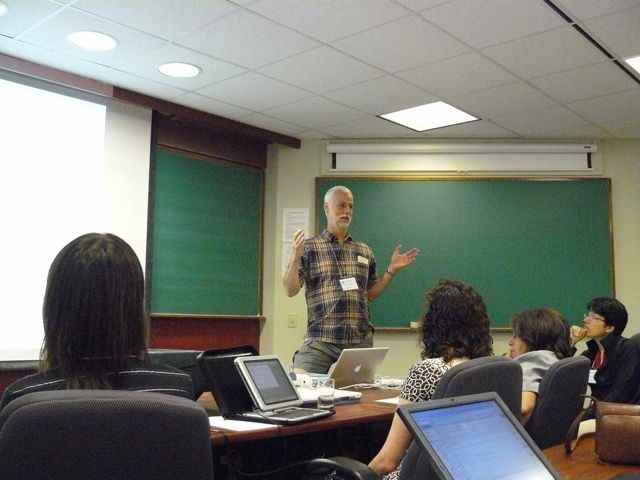
|
Mentoring undergraduates for research is a relatively new phenomenon, one that has not yet received significant attention in the literature or workshops on mentoring. The motivations and methods are not well known, so by way of introduction it is useful to begin with the personal story of Professor Richard Ladner, who has been increasingly active in developing and sustaining undergraduate research programs at the University of Washington (UW).
Ladner grew up with deaf parents, and has long had a strong passion for working with undergraduates, which has continued through his career in theoretical computer science. His interest in research at the undergraduate level began with his first research experience as an undergraduate proposing and developing a problem under the supervision of a sympathetic faculty member. He still recalls the frustration and struggle of trying many directions that did not succeed, and receiving guidance from his professor that was not always productive. Nonetheless he made progress and found a solution, and came to the realization that this was the nature of research. Later as a CS faculty member, he understood based on his own experience that many undergraduates are quite capable of learning research skills and performing research, and that for faculty mentors supervising such research, the rewards can be great. Unlike graduate students, research for undergraduates is not yet a "profession," and greater risks can be taken in the selection of problems -- the students will learn basic tools and skills and make some progress even if they do not finish with an elegant solution to a famous problem. Beginning with only one or two students a year within a small department, Ladner helped students find and work on a variety of problems that matched their interests. Initially problems grew out of his class projects and discussions with students and were often continued as part of a departmental senior honors program that required only a sufficient grade point average and a willing faculty mentor to begin, and a senior thesis to complete.
In time, Ladner helped develop and support a variety of formal programs for encouraging undergraduates to do research with a faculty member. These programs for the institutionalization of undergraduate research are described later in this chapter. His own interests coincided with UW's interest in promoting undergraduate research.
In the past eight years, Ladner has personally supervised over 40 undergraduate students. He has nominated several for the Computer Research Association (CRA) Outstanding Undergraduate Award, two of his students have won the Best Senior Thesis Award, and he has published papers in journals, conferences, and workshops with 20 of these students. Some of these students have gone on to graduate school, but most are working in industry. Some of these students are from other institutions: Caltech, University of Portland, and Norfolk State University. In some cases, he has worked with students for as little as three months, but with most it has been for a year or more.
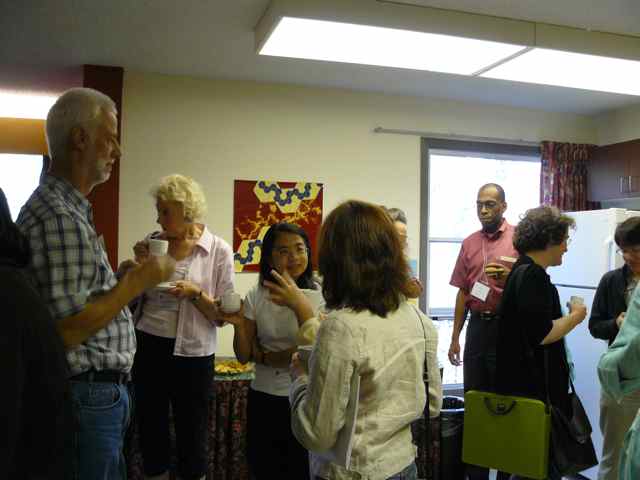
|
The motivation for UW to promote undergraduate research lies in its desire to distinguish itself from other colleges and universities in order to attract the top high school students in the state, who might otherwise go elsewhere. The University wants to leverage its recognition as a great research university to attract and retain stronger undergraduates. In order for UW to place a priority on undergraduate research, it established the Undergraduate Research Program (URP) under the Dean of Undergraduate Education. This program sponsors over 200 undergraduate research scholarships per year through the Mary Gates Endowment for Students. Between $ 3,000 and $ 4,500 per year is given directly to the student. To receive a scholarship, a student must have a research project supervised by a faculty member. The student's application contains a letter of support from the faculty sponsor. Each quarter, the faculty member reports on the student's progress. Every year the URP has an undergraduate research symposium where hundreds of students present posters and give talks. URP sponsors workshops for faculty members who have an interest in working with undergraduates and workshops for students on how to get involved in research projects. Since the inception of the URP in 1997, the number of undergraduates involved in at least one quarter of research has increased from about 600 students to over 4,000 students annually. The Washington NASA Space Grant program is centered at UW. It sponsors more than 50 internships for undergraduates each summer. The program requires matching funds from a faculty member. The students in the Space Grant program form a cohort, where they not only work on separate research projects, but meet once a week to share with each other what they are doing and have career-building workshops.
The University is very supportive of applications for NSF Research Experiences for Undergraduates (REU) Sites and Supplements. There are currently three NSF REU Sites at UW, in Material Science, Chemistry, and Mathematics. Summer students in these programs can take advantage of career-building workshops sponsored by URP and the Career Center. Working at a university with strong support for undergraduate research has really helped Ladner's own efforts in this direction. Fifteen of his students have received Mary Gates Research Scholarships and three have received NASA Space Grant awards. The URP infrastructure that conducts career-building workshops and research symposia has helped his research students and complements what he does with them individually.
Faculty are encourged to take full advantage of the NSF REU Supplement program, which is available to anyone who holds an NSF grant. A supplement can pay an undergraduate both in the summer and during the academic year. Eighteen of his students have received NSF REU supplement awards since 2000. The process of applying for a supplement is very easy, taking at most an hour. As with all supplements, one should contact the grant program manager before applying. Program officers at NSF do not like to be surprised with a supplement request. The Computer Science and Engineering Department has to build up the infrastructure to support undergraduate research. The Department has an Undergraduate Research Seminar that started in 1999, where students give 50-minute talks on their research to their peers. Since 1999 more than 115 students have given talks in the seminar. Working with a student to prepare a talk is one of the best ways to cement a relationship. The department also has an Honors Program that requires a senior thesis and a talk and gives the Best Senior Thesis Award each year. These kinds of activities encourage both students and faculty to engage in research together. On average, about 40 undergraduates in the department are signed up for some research credit each quarter.
The goal of mentoring undergraduates in research is not to mold them in your image, but to give them a taste of research to help them decide what kind of future they will choose for themselves. As a byproduct, mentoring undergraduates can be helpful to a faculty member's research program.
Often students approach a faculty member wanting to work on some project. The faculty member should request a transcript and resume, to help determine if the student is ready for a research project. If the student is ready and the faculty member is not too busy, the faculty member could take the student on. When a faculty member has a project for a student and no one is in the queue, the faculty member could do an "open hire," that is, advertise and do interviews. Finally, when teaching a class, it is easy to find a student who did a terrific job in the class. In this case faculty members can ask the student to work with them even though a specific project is yet to be determined. Sitting down with the student for an hour just to talk and to find out what he or she is interested in can help determine a project. Professor Ladner recalled one memorable student, who was a double major in computer science and music and a concert pianist. He created a project for her that involved the "analysis of music using data compression." Later two other double majors in computer science and music worked with him on "computer analysis of music." In many of these cases, the student worked on one project, then later found a better fit on another project.
It is extremely rare that a student has a research project in mind, so it is necessary to provide one, at least at the beginning. The trick is finding a research project that suits the student. With most students, the goal of the interview process is to find out what they are interested in and what they are capable of doing. It is best to try to fit the project to the student rather than the other way around. Students interested in theory might not want to do an implementation project, and students who like to code a lot do not usually like to prove theorems. This is an oversimplification, because most students are more complex in their interests and abilities.
Working with undergraduate researchers is different than working with graduate students because undergraduate students are usually testing the waters to see if they like research, while graduate students are committed to research. Because undergraduate students are usually involved in their first research projects, it is important to remember that real research is by its nature frustrating. It is important to be careful not to be too critical, to set high standards but at the same time always be encouraging. Encouragement does not mean giving false or unwarranted praise. It means understanding the struggle to do something new, and encouraging the student to keep at it. Understand that lulls in productivity are common in research, but always expect the student to work hard. Give guidance and direction without completely taking over the project. When a student makes a breakthrough, writes a nice paper, or gives a good talk, then give them a pat on the back and nominate him or her for an award.
Some students work on group projects, sometimes partially supervised by a graduate student or even a senior undergraduate. In these cases, students are invited to the weekly group meeting. With some of these students, an individual meeting is more appropriate if they are working on a specific problem where they need more time with the faculty member. Even those students who are working in a group are eventually given a piece of a project that they own, where they have full responsibility. In the beginning, the student might be told to do this or that, but as the student learns more about the project, he or she becomes ready to take a piece of it and run with it. There are other students who have their own individual projects, where the faculty member meets with each individual weekly. Usually a faculty member has time to give full attention to only two or three of these students. Some of these students later move into a group project, and some of them move from a group project to an individual one.
 |
Mentoring students and junior faculty for a role in academic leadership is critical for the future. Only effective leaders can guide a faculty to build and maintain high quality diverse programs. Mentoring techniques specifically aimed at encouraging students and young faculty to consider leadership paths in their careers have been discussed in the literature, for example in [23]. At UW, a major initiative towards this end has been the Mentoring-for-Leadership lunch, created in 2003 as part of a National Science Foundation ADVANCE Center for Institutional Change at UW. As described in more detail in [33], the lunch series was developed for women faculty in STEM (science, technology, engineering, and mathematics) fields to focus specifically on women leaders and to counter the negative impact that the scarcity of women leaders in STEM may have on female scientists' career aspirations. Each event features a different woman leader who discusses the benefits and challenges of holding an administrative job and shares her unique experiences on her path towards leadership. This program aims to encourage STEM women faculty to consider leadership and uses personal narratives to demonstrate to women faculty that there are many ways to become a leader in academia.
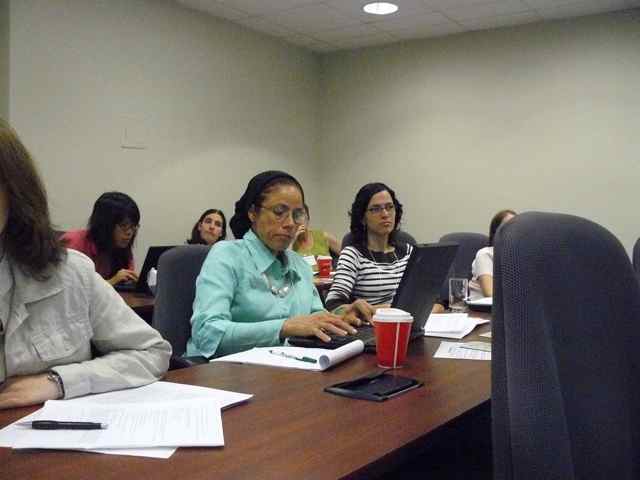 |
These lunches allow women faculty to gather informally for an hour and a half. Food is provided and for the first 20-30 minutes, participants eat and converse with one another. The speaker then briefly shares with the group both personal and professional experiences relevant to her career trajectory. Speakers limit their remarks to 20 minutes to encourage time for discussion. Speakers typically reflect upon the challenges of finding a balance between work and life, research and leadership commitments; confronting and overcoming career obstacles; difficulties encountered in leadership positions; and the factors that contributed to their decision to pursue leadership positions. This discussion-based event concludes with a question and answer session, allowing participants to not only learn further from the speaker but from each other as well.
The leadership positions of the invited speakers are varied. Many speakers are from a STEM background, although a variety of fields have been represented. Between May 2003 and December 2006, 44 women have spoken. During that time, 54.5% of the speakers were from UW and 45.5% were from other universities or national organizations. Sixty-five percent of the speakers have been at the associate dean level or higher. The ADVANCE Mentoring-for-Leadership lunch series offers women faculty in STEM, who are often few, the opportunity to network across units and to build a community of women scientists at UW. Past participants hail from over 30 STEM departments at UW and other universities. The lunches bring together women who may not otherwise meet. Participants often note how rare it is to gather together in a group with other women science and engineering faculty. Speakers, too, have commented on the powerful effects of this critical mass. These events encourage multi-directional mentoring. Speakers have said that they appreciate the opportunity to reflect on their accomplishments and how their gender has had an impact on their career. A number of contributors, including both speakers and participants, have been promoted since taking part in the lunch series. By learning from other women what specific leadership positions entail and what strategies women employ to successfully navigate through the upper echelons of academia, women faculty can be inspired to become leaders themselves. A brief description of the program is located at http://www.engr.washington.edu/advance/mentoring/index.html#leadership
Another webpage with information about past speakers and email templates that can be used to facilitate establishing a similar program at other campuses is located at
http://www.engr.washington.edu/advance/mentoring/leadership_lunch.html
.

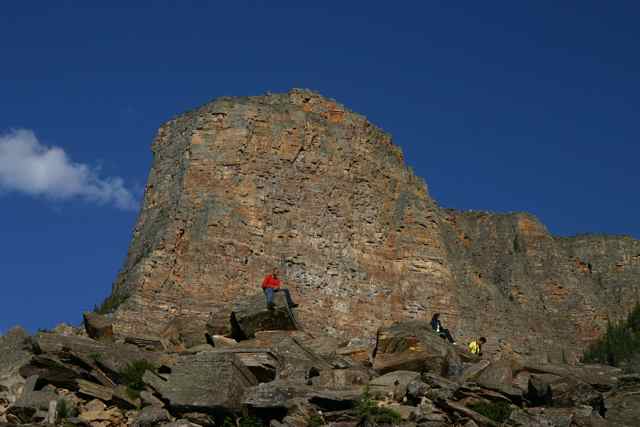
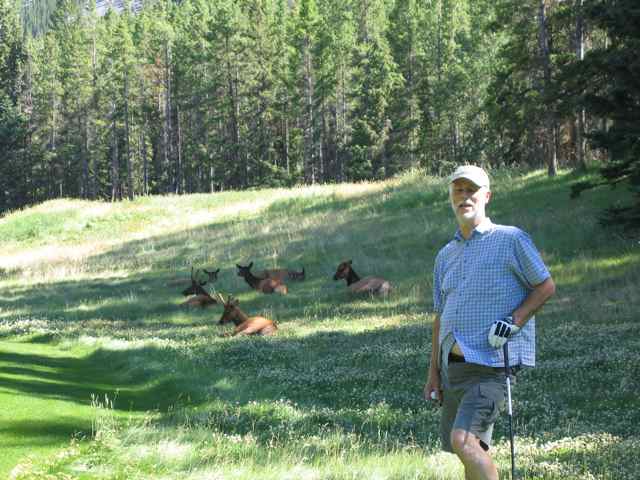

 |  |  | 2 Fundamentals |